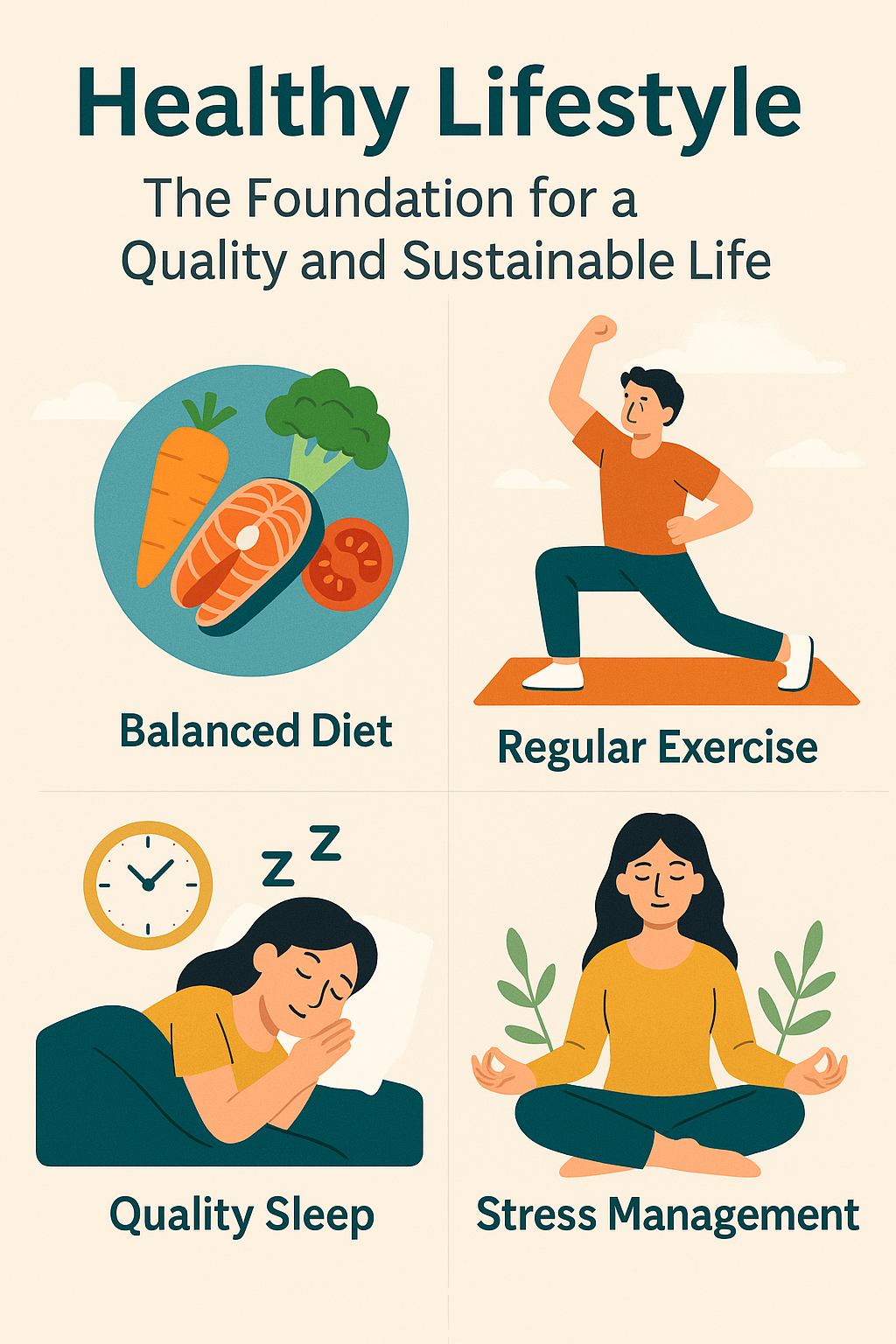Healthy Lifestyle: The Foundation for a Quality and Sustainable Life
Introduction
Health is the most valuable asset in human life. Without good health, all achievements and material wealth become meaningless. Ironically, in this modern era of convenience and rapid technological advancement, more and more people are neglecting this fundamental aspect of life. Busy schedules, chronic stress, poor diet, lack of sleep, and sedentary habits have become daily routines for many. As a result, non-communicable diseases like diabetes, hypertension, heart disease, and mental health issues are on the rise.
To combat this, we need both collective and individual awareness to adopt a healthy lifestyle. A healthy lifestyle is not just about avoiding illness—it’s a holistic approach to living that encompasses the body, mind, and soul.
Chapter 1: Definition and Essence of a Healthy Lifestyle
A healthy lifestyle can be defined as a way of living that enhances physical, mental, and emotional well-being through consistent positive habits. The essence of a healthy lifestyle lies in awareness, consistency, and balance.
The three key pillars of a healthy lifestyle include:
1. Physical health – fitness, balanced nutrition, and quality sleep.
2. Mental health – emotional stability, positive thinking, and stress management.
3. Social and spiritual health – healthy relationships and meaningful living.
Chapter 2: Key Components of a Healthy Lifestyle
2.1 Balanced and Nutritious Diet
Food is the body’s primary source of energy. What we eat significantly influences our short- and long-term health.
Principles of a healthy diet:
Follow balanced nutrition guidelines (carbohydrates, protein, healthy fats, fiber, vitamins, minerals).
Limit sugar, salt, and trans fats.
Make fruits and vegetables a staple in every meal.
Avoid sugary drinks; drink plenty of water instead.
Practice portion control and mindful eating.
2.2 Regular Physical Activity
Our bodies are made to move. Physical activity improves circulation, metabolism, muscle strength, and mental health.
Recommended physical activity:
Adults: At least 150 minutes of moderate-intensity exercise per week (brisk walking, swimming, yoga).
Children: At least 60 minutes of active play or movement daily.
Combine cardio, strength, and flexibility exercises for optimal results.
2.3 Quality Rest and Sleep
Sleep is essential for bodily repair and hormonal balance.
Tips for quality sleep:
Maintain a consistent sleep schedule.
Avoid caffeine and screen time before bed.
Create a calm, cool, and dark sleeping environment.
Sleep deprivation may lead to concentration problems, obesity, depression, and weakened immunity.
2.4 Stress Management and Mental Health
Stress is a natural part of life, but poor stress management can severely impact our well-being.
Healthy ways to manage stress:
Practice meditation or deep breathing.
Engage in physical activity or nature walks.
Keep a journal or talk to a trusted friend or therapist.
Limit exposure to negative news and social media.
2.5 Social Connections and Spirituality
Humans are social beings. Meaningful connections with family, friends, and the community contribute to emotional resilience. For many, spiritual practices like prayer or meditation also offer strength and inner peace.
Chapter 3: Positive Impacts of a Healthy Lifestyle
Adopting a healthy lifestyle consistently brings tangible, long-term benefits:
Physical: Increased energy, healthy weight management, stronger immunity.
Mental: Greater clarity, deeper sleep, improved focus.
Emotional: More stable mood, greater gratitude, reduced irritability.
Social: Stronger relationships, improved communication, higher self-esteem.
Financial: Lower healthcare costs due to reduced risk of chronic illness.
Chapter 4: Challenges and How to Overcome Them
Common Challenges:
Lack of time
Temptation of fast food and convenience
Sedentary work routines
Unsupportive environments
Realistic Solutions:
Start small: Replace snacks with fruits, or take a 10-minute walk after meals.
Build routines: Set a fixed time for light daily exercise.
Create support systems: Involve family or friends in your health journey.
Use technology: Fitness trackers, hydration reminders, and sleep monitoring apps can help keep you accountable.
Chapter 5: Healthy Living in the Digital Era
While technology offers great convenience, it also introduces new health risks such as excessive screen time and sedentary behavior.
Tips for staying healthy in a digital world:
Set screen time limits on your devices.
Follow the 20-20-20 rule to rest your eyes (every 20 minutes, look 20 feet away for 20 seconds).
Use a standing desk if possible.
Unplug regularly—schedule daily offline time for digital detox.
Conclusion: Make Healthy Living a Lifestyle, Not a Trend
A healthy lifestyle is not a short-term project or a new year’s resolution. It is a lifelong journey shaped by daily decisions. You don’t need to be perfect—you just need to keep moving forward.
Start with what you can do today: drink more water, go to bed a little earlier, take a walk, or reconnect with a friend. These simple choices are building blocks for a stronger, more vibrant life.
Health is not something you receive—it’s something you earn through habits. Take care of your body, mind, and soul. It’s the only home you’ll ever truly live in.